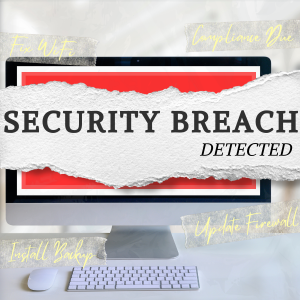 Not long ago, a client asked me a simple but important question:
Not long ago, a client asked me a simple but important question:
“What are the biggest IT and cybersecurity mistakes business owners make?”
Honestly? The list is long — but some issues come up again and again.
1. Treating IT and Cybersecurity as an Afterthought
Despite the constant stream of data breaches in the news, too many business owners still assume, “It won’t happen to me.” That mindset is dangerous. Whether you're a startup or a well-established company, taking a reactive approach to cybersecurity is a costly gamble. Waiting until something breaks or you get hit with ransomware is not a strategy — it’s a liability.
A single cyberattack or IT system failure can bring your operations to a halt, damage your reputation, and drain your finances. Yet many companies only begin investing in IT support or cybersecurity solutions after an incident — when the damage has already been done.
2. Relying on Free Tools and Consumer-Grade Tech
It’s easy to understand the appeal of free antivirus software or off-the-shelf Wi-Fi routers — especially when you're watching every dollar. But using free or consumer-grade tools to run a business is a risk you can't afford.
Think about it this way: Would you run your business using a free word processor or spreadsheet tool with limited features and no support? Probably not. So why trust your entire IT infrastructure to solutions that weren’t built for professional use?
Free tools often lack the advanced threat detection, encryption, and compliance support that business-grade IT systems provide. The short-term savings aren’t worth the long-term risks — including breaches, compliance violations, and the loss of customer trust.
3. Underestimating the True Cost of Downtime
Another frequent oversight is assuming a little downtime is no big deal. In reality, every hour your systems are offline costs your money — and productivity. Employees can’t work, customers can’t access your services, and critical operations grind to a halt.
Whether it’s a hardware failure, software glitch, or cyberattack, downtime is disruptive. A strong IT strategy doesn’t just protect you from threats — it ensures continuity, keeping your business running smoothly no matter what hits.
4. Failing to Plan for the Future
Cybersecurity isn’t a set-it-and-forget-it project. Threats are constantly evolving. Hackers are getting smarter. Technologies are always changing.
If you’re not continuously reviewing and updating your security posture, you’re falling behind — and leaving your business vulnerable. Staying proactive means scheduling regular assessments, monitoring for new risks, and making strategic IT improvements as your company grows.
The Bottom Line: Don’t Gamble with Your Business
Your business is too valuable to protect with shortcuts or outdated tools. Here's what I recommend to every business owner:
- Stop cutting corners. Invest in professional-grade IT and cybersecurity solutions.
- Think long-term. Make cybersecurity part of your ongoing business strategy.
- Work with experts. Don’t go it alone — partner with professionals who specialize in keeping businesses secure and operational.
Want to know where your business stands today? Let’s find out.
Click here to schedule a FREE 15-minute Security Assessment or call us at (281) 646-1200 and take the first step toward smarter IT and stronger cybersecurity!



